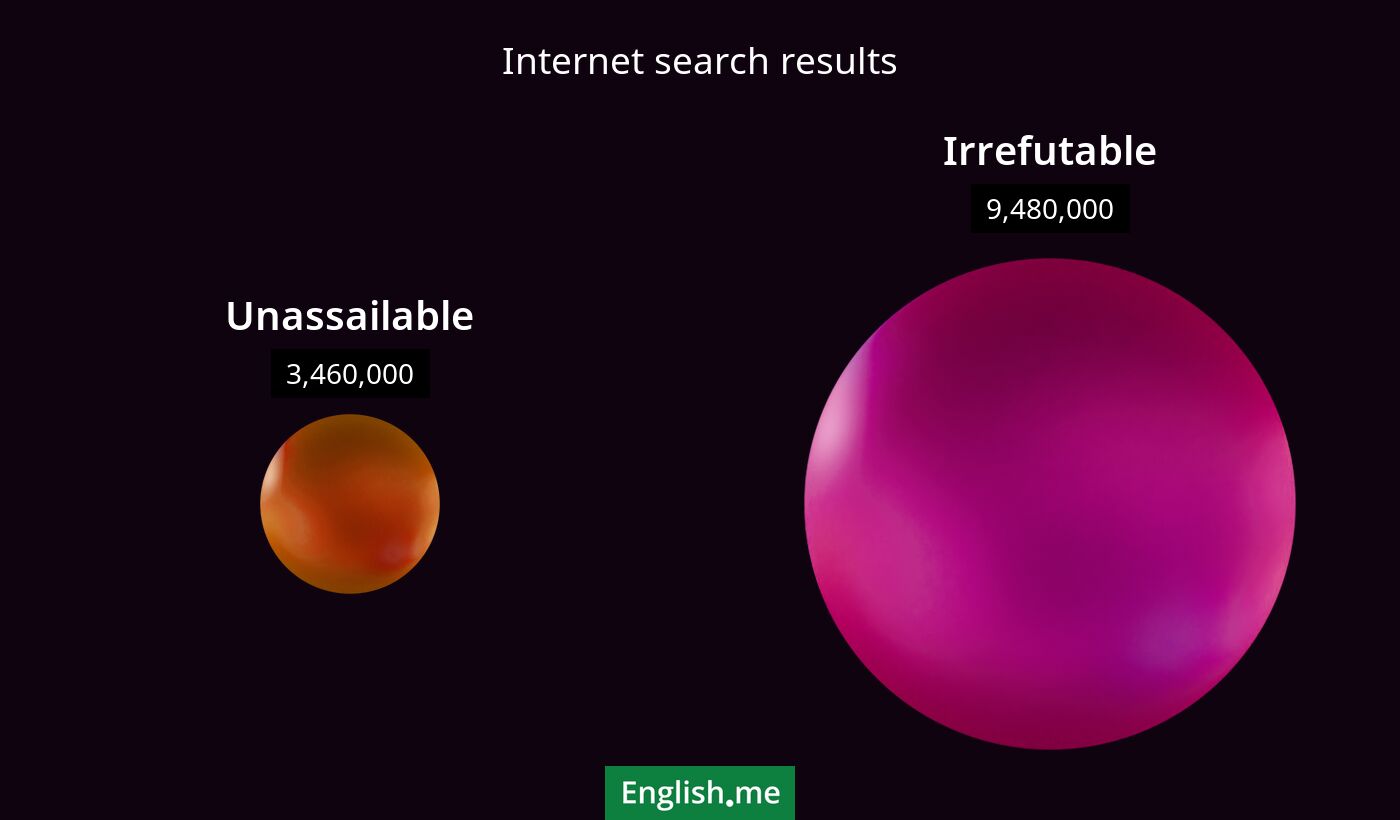"Unassailable" vs. "irrefutable": words that stand firm
Reviewed and edited by  Lloyd Cooper 05/10/2024, 23:33
Lloyd Cooper 05/10/2024, 23:33
English.me team member

 What is similar?
What is similar?
Both words are adjectives that indicate the concept of being unable to be disproved or attacked successfully. They suggest a level of certainty or strength in an argument or position.
 What is different?
What is different?
Unassailable often refers to something that cannot be attacked or criticized, usually in an abstract or strategic sense, while irrefutable specifically means something that cannot be proved wrong or denied, focusing more on evidence or truth.
 Which one is more common?
Which one is more common?

 Examples of usage
Examples of usage
Unassailable- The fortress was located on an unassailable mountain peak.
- Her reputation for integrity rendered her position unassailable.
- The team's lead in the points standings was unassailable.
- The lawyer presented irrefutable evidence that convinced the jury.
- Her argument was based on irrefutable facts and data.
- The scientist's findings were considered irrefutable by the academic community.

 English
English español
español française
française italiano
italiano deutsche
deutsche 日本語
日本語 polski
polski česky
česky svenska
svenska Türkçe
Türkçe Nederlands
Nederlands